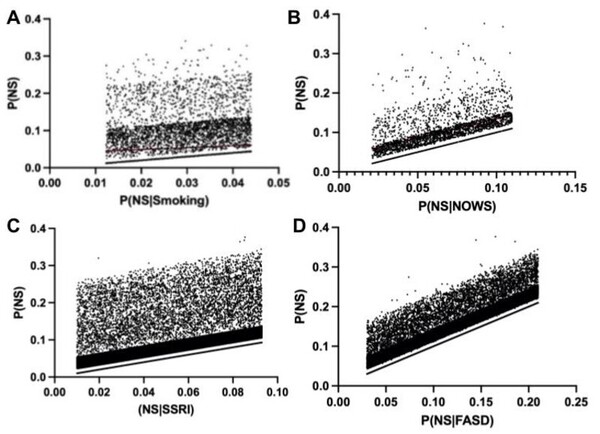An assessment of controllable etiological factors involved in neonatal seizure using a Monte Carlo model
(1) George W. Hewlett High School
https://doi.org/10.59720/24-054
Neonatal seizures occur in 0.01-0.06% of newborns. Many studies have correlated single factors with neonatal seizures, but emerging evidence indicates that the stimuli for neonatal seizures are multifactorial. To decrease neonatal seizure incidence, it is important to identify which combinations of factors have the greatest effect. The ability to identify the combinatorial influence has been restricted so far due to the limited number of case studies. Monte Carlo is a simulation method used to determine the probability of an uncertain event by simulating a large number of experiments that are otherwise unfeasible. We identified four controllable risk factors from previous studies: smoking, alcohol consumption, opioid use, and selective serotonin reuptake inhibitors use (SSRIs). Here, we used Monte Carlo simulations to examine the interplay of multiple factors simultaneously, which has not been considered in many previous studies. Previously, alcohol consumption and opioid use have only been associated with seizure through an intermediary factor (Fetal Alcohol Spectrum Disorders and Neonatal Opioid Withdrawal Syndrome, respectively). Our simulation demonstrated that there is a weak relationship between smoking and seizure and the strongest association between alcohol consumption and seizures. Similar to opioid use, SSRIs have previously been shown to have a moderate relationship with neonatal seizures. In contrast to published studies, our algorithm showed that SSRIs have a more significant role. Our work provides support for use of Monte Carlo simulations to determine the contribution of controllable factors to neonatal seizures, with the potential for ultimately allowing for more informed clinical decisions.
This article has been tagged with: